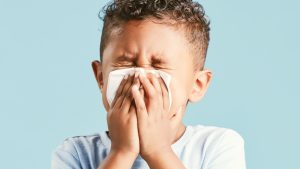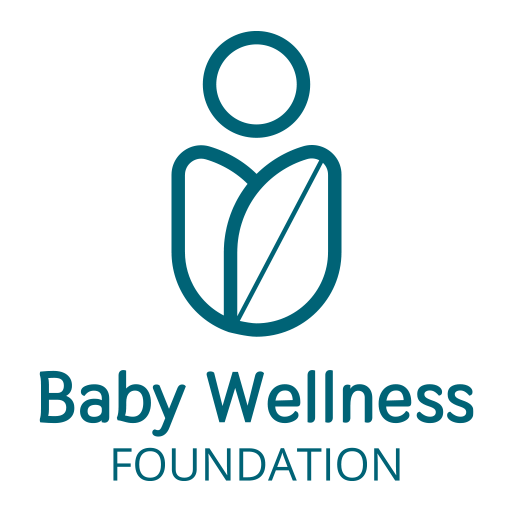Approfondimenti scientifici
Allergies and Hypersensitivity: When the Newborn Speaks with their Body
With the arrival of spring and longer days, the first warming sun invites people to spend time outdoors, perhaps strolling in the park. However, for some, this time of year brings hidden dangers, including allergies. These reactions of the immune system, triggered by physiologically harmless substances such as pollen or dust, can pose a risk even for newborns. Allergies, in fact, are not limited to adults—they can manifest as early as the first months of life and include a variety of immune responses that require attention and prevention.

Neonatal allergies and the immune system
Allergies, particularly those affecting newborns, occur when the immune system reacts abnormally to substances that physiologically should not cause any reaction (such as dust, pollen, dust mites, or animal dander). In newborns, the immune system is still developing and has not yet acquired the full ability to distinguish between harmful and harmless substances. This can lead to allergic reactions even in the first months of life, although symptoms can vary and may not always be immediately recognized.
The difference between allergies, intolerances, and hypersensitivity lies in the causes and response mechanisms of the body to certain agents or substances. Although the terms are often used interchangeably, each describes a distinct phenomenon involving the immune system differently.
Allergies
Allergies are abnormal immune responses to normally harmless substances, such as pollen, dust mites, certain foods, or medications. In an allergic individual, the body mistakenly identifies a substance as harmful and reacts by releasing histamine and other chemicals, causing typical symptoms (rash, itching, swelling, breathing difficulties, or even anaphylactic shock in severe cases). Allergies are mediated by the immune system, specifically through a type IgE response, in which IgE antibodies recognize the allergen and trigger an immediate reaction.
Intolerances
Intolerances are non-immune reactions that occur when the body is unable to digest or metabolize a substance properly, usually a food or food component. The cause is primarily a lack of enzymes necessary to process that substance, such as in the case of lactose intolerance, where the enzyme lactase is insufficient. The most common symptoms of intolerance are gastrointestinal issues like bloating, diarrhea, or abdominal cramps, but they do not cause permanent damage like allergies do. Unlike allergies, intolerance does not involve the immune system.
Hypersensitivity
Hypersensitivity refers to a heightened response by the body compared to normal, but not necessarily caused by an allergy. It can be seen as an exaggerated or inappropriate reaction to stimuli that shouldn’t trigger a response. Hypersensitivity can manifest in various ways:
- Hyperreactivity: the body reacts excessively or disproportionately to an allergen, but without a true allergy.
- Other immune responses: hypersensitivity can also be a symptom of an immune reaction that isn’t strictly allergic but still involves an exaggerated response to certain substances.
Hereditary factors and predisposition to allergies
Allergies are not directly hereditary diseases, but a predisposition to developing them can be inherited. In other words, if one or both parents are allergic, the newborn may have a higher chance of developing allergic sensitivity. Although heredity doesn’t determine the onset of the allergy, a family history significantly increases the risk, making the immune system more susceptible to reacting to otherwise harmless substances.
Environmental factors and incidence of neonatal allergies
Besides genetic predisposition, environmental factors also play a crucial role in determining if and when an allergy manifests in newborns. Exposure to air pollutants, chemicals, and fine particles can alter the functioning of the immune system, predisposing children to allergic reactions. A clear example of how environmental factors influence the onset of allergies is the spread of ragweed in the last 20 years, a plant that releases highly allergenic pollen. This phenomenon has led to an increase in allergies, even among children who were not previously affected. Some common household chemicals, such as cleaning products, pesticides, paints, and furniture materials, can be harmful to newborns. These substances—like ammonia, phthalates, formaldehyde, and BPA—can cause irritations, respiratory issues, hormonal disruptions, and neurotoxicity. To protect the newborn, it is important to choose eco-friendly products, avoid passive smoke, and use safe materials such as glass or stainless steel. Monitoring the home environment reduces exposure to these substances to ensure a safe environment.
How allergies manifest in newborns
In newborns, allergy symptoms can vary but often include eczema, itching, nasal congestion, and breathing difficulties. These signs can be easily mistaken for other common early-life conditions, such as colds or skin irritation, but it is essential to promptly recognize allergic symptoms to intervene appropriately.
Prevention and management of neonatal allergies
Managing allergies in newborns requires an early and attentive approach, as the baby’s immune system is still developing and particularly vulnerable. A key aspect of preventing neonatal allergies is monitoring the home environment. It is essential to minimize exposure to potential allergens that could trigger allergic reactions in the newborn. In families with a history of allergies, the predisposition is higher, so taking preventive measures becomes even more critical.
Among the prevention strategies, frequent cleaning of the living space is useful to limit the accumulation of allergens on surfaces and in the air. Additionally, using natural fabrics like cotton, wool, and bamboo, which respect the delicate needs of neonatal skin, can help preserve the integrity of the skin barrier, reducing the risk of allergic dermatitis. These materials are ideal for protecting the baby’s skin from irritation and allergic reactions that may arise from contact with synthetic fabrics.
Maintaining an appropriate indoor temperature is crucial for the well-being of newborns and infants. A temperature between 19°C and 21°C (66°F to 70°F) is ideal, as it supports regular breathing, ensures quality rest, and promotes proper physical and neurological development. An environment that is too hot or too cold can disrupt neonatal thermoregulation, causing respiratory difficulties or sleep disturbances. Additionally, maintaining a controlled temperature helps reduce the risk of respiratory allergies, as it limits the growth of dust and mites that thrive in warm and humid environments. This creates a healthy and safe space for the baby.
Timely pediatric consultation is essential for early diagnosis of neonatal allergies. An experienced pediatrician can quickly identify signs of sensitization and establish an appropriate treatment plan. This may include pharmacological therapies such as antihistamines to help control allergic symptoms, or interventions to improve indoor air quality, such as installing dehumidifiers or air purifiers to reduce allergens in the environment.
Bachert, C., & Bousquet, J. (2018). Allergic rhinitis and its impact on asthma. World Health Organization.
Greer, F. R., Sicherer, S. H., & Burks, W. (2017). Pediatric allergy: Principles and practice. Elsevier.
Kliegman, R. M., Stanton, B. F., St. Geme, J. W., & Schor, N. F. (2020). Nelson textbook of pediatrics (21st ed.). Elsevier.
Muraro, A., Roberts, G., & Worm, M. (2014). EAACI guidelines on allergic disease: Diagnosis and treatment. European Academy of Allergy and Clinical Immunology.
O’Hehir, R. E., & Bochner, B. S. (2019). Allergy and allergic diseases. Wiley-Blackwell.
Paller, A. S., & Mancini, A. J. (2015). Allergic diseases in infants and children: Diagnosis and treatment. Elsevier.
Saarinen, K., & Savilahti, E. (2016). Early childhood allergy: Diagnosis and management. Springer.
